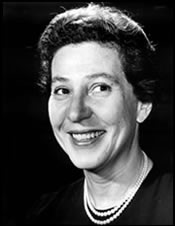
|
Compositions *** |
Paean
year
1969
duration
10 minutes
instrumentation
Brass ensemble (six trumpets, six trombones), female chorus and narrator (tenor)
text
John Keats, “Ode to Apollo”
commission
Eastman Brass Ensemble
première
April 7, 1970, Bennington College, Bennington, Vermont; Frank Baker, narrator, Bennington Choral Ensemble, Eastman Brass Ensemble, Vivian Fine, conductor
recording
“Music From Bennington,” Composers’ Recording Incorporated (CRI SD 250).
Also available on demo CD
program notes
…Imaginative brass and vocal sounds produce a varied fabric which is unified by recurring vertical structures…The texture varies from homophonic to intricate contrapuntal and pointillistic styles which call for rhythmic precision amid frequent tempo and meter changes. The text is the source of various monosyllabic vocal sounds which are enhanced by allusive vocal inflections….A women’s chorus, divided into singing and speaking choruses, and a male narrator (tenor) supply an assortment of sung and spoken sounds which are both contrasting and imitative of the brass sonorities….In its wordless text, the chorus uses natural vocal sounds such as “ah,” “oh” and “uh,” along with unusual sounds such as “dzh” which produces a buzzing sound. Vocal inflection is emphasized as several of the syllables are spoken with a rising sound with a shake, or with rising and falling sounds. These inflections give the syllables a more expressive quality. Overlapping of the same rising and falling sound (“oh”) by the divided chorus produces an echo-like effect….The breathy “ah” sound and the loud whispers are mysterious and suggestive, as are the kissing sounds….Loud exclamations…are answered by imitative trumpet figures of seconds and octaves over a major seventh. The singing chorus occasionally mirrors the trumpet line, either in unison or octaves; in the midst of a particularly violent brass section the chorus sings with the trumpets in sustained octaves on “ah-ee” while the speaking chorus interjects screams which effectively convey the emotional sense of the text….”Chance” or free chords in which each singer may select a tone of her own choosing are frequently used at the close of sections……
Keats’ Ode is itself a paean, a group of songs of rejoicing in honor of Apollo. In the poem, each of nine past poets offers a song for the entertainment of the god. Each of the divergent songs is unsurpassed, but none is universal. But when Apollo joins the combined players, it is his song that proves to be the most beautiful and universal of all. Fine selected parts of the “Ode” that present trumpet and/or harp imagery associated with the poets Homer, Spenser, and Tasso. Homer’s harp and trumpets call to war, Spenser’s silver trumpet evokes “a hymn in praise of spotless chastity,” and Tasso’s harp beckons “youth from idle slumber, Rousing them from pleasure’s lair.”
Paean represents an expansion in Fine compositional thinking. Although still inspired by Graham’s use of Greek mythology (recall Fine’s Alcestis and Persephone), Fine used Paean as an opportunity to experiment with aspects of indeterminacy, improvisation, phonetic text, and quarter-tones. In addition, she had not written for a brass ensemble before….Paean begins with a twenty-two measure passage for brass that resembles keyboard writing. Chords of stacked fourths and registral articulations of seconds set the mood for the forthcoming text. Fine took advantage of dynamic envelopes, usually progressing from soft to loud, and several mute changes, to create color and excitement. The unaccompanied chorus enters using phonemes, such as “ah mm ah uh,” and, for the most part, Paean moves from incoherent vocal sounds to finally sung text at the end. Spoken passages by the narrator from Keats’ text supply the war imagery for the next section of the piece. The chorus interprets these with shaking rising and falling sounds, screams, kissing, whispers, and an improvisation such that “the effect should be one of mass wailing and lamentation” while the brass pursue a martial chordal texture with an occasional melodic passage from the first trumpet.
In addition to the beginning, the brass ensemble has several sections alone. One sounds improvised, but Fine notated with complex rhythms of 7, 8, and 10 in a 3 / 4 meter and quasi-serial techniques in which some of the pitches are either permutations, retrograde, or truncated versions of a twelve-note row stated at the beginning of the passage….Paean ends recalling its beginning, a favorite closure for Fine.–Marilyn Bachelder, “Women in Music Composition: Ruth Crawford-Seeger, Peggy Glanville-Hicks, and Vivian Fine,” Master’s thesis, Eastern Michigan University, 1973, and Heidi Von Gunden, The Music of Vivian Fine, Scarecrow Press, 1999
reviews
“Vivid, entertaining, sometimes moving”
–Albert Frankenstein, High Fidelity Magazine, October, 1971
audio files